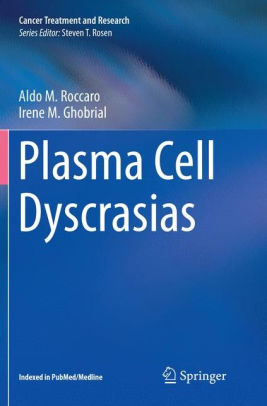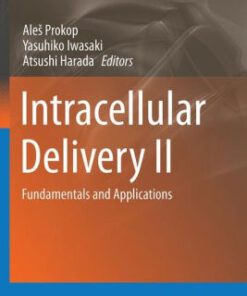(PDF) Plasma Cell Dyscrasias by Aldo M. Roccaro
$18.00
Download instantly Plasma Cell Dyscrasias by Aldo M. Roccaro, Irene M. Ghobrial. It is ebook in PDF format.
ISBN-10: 3319820788 ISBN-13: 9783319820781
Preview
This is the PDF eBook version for Plasma Cell Dyscrasias by Aldo M. Roccaro, Irene M. Ghobrial
Table of Contents
Monoclonal Gammopathy of Undetermined Significance and Smoldering Myeloma
1 MGUS and Smoldering Multiple Myeloma: Diagnosis and Epidemiology
Abstract
1 Introduction
2 Differential Diagnosis with Other Entities
3 Diagnostic Work-up
4 Risk Factors Predicting Progression to MM Requiring Therapy
5 Management of MGUS and SMM Patients
6 Managing MGUS and SMM Patients in Clinical Practice
References
Multiple Myeloma
2 Vision Statement for Multiple Myeloma: Future Directions
Abstract
1 Introduction
2 Excess Protein Production
3 The Host Immunosuppressive Environment
4 Genomic Abnormalities
5 Summary and Future Directions
References
3 Genomic Aberrations in Multiple Myeloma
Abstract
1 Introduction
2 Inherited Variants
3 Chromosomal Translocations
4 Hyperdiploidy
5 Copy Number Variations
6 Somatic Mutations
7 Clonal Heterogeneity in Multiple Myeloma
8 Conclusion
References
4 Epigenetics in Multiple Myeloma
Abstract
1 Genetic Aberration in Multiple Myeloma
1.1 DNA Methylation in MM
1.2 miRNAs and Cancer
2 miRNA Synthesis and Function
3 miRNA’s in Blood Cancers
4 Epigenetic Regulation in MGUS
5 Epigenetic Regulation in MM
6 Epigentic Regulation in MGUS Progression
7 miRNAs as Regulators of p53 Activity in MM
7.1 Histone Modifications in MM
8 Epigenetic Regulation of Key Genes in MM
9 Epigenetic Regulation of the Bone Marrow Niche in MM
10 Conclusion
References
5 Role of Endothelial Cells and Fibroblasts in Multiple Myeloma Angiogenic Switch
Abstract
1 Tumor Microenvironment
2 Angiogenesis in Multiple Myeloma
3 Multiple Myeloma Endothelial Cells (MMECs)
4 MM Associated Fibroblasts
5 Therapeutic Applications
Acknowledgments
References
6 Targeting the Bone Marrow Microenvironment
Abstract
1 Introduction
2 The Cellular Compartment
2.1 Accessory Cells
2.2 The Immune Cell Microenvironment
2.3 Focus on MM Bone Disease
2.4 Bone Marrow Adipose Tissues
3 The Extracellular Compartment and the Liquid Milieu
3.1 The Extracellular Matrix (ECM)
3.2 The Liquid Milieu
4 Recent New Insights on Signaling Molecules
5 Hypoxia within the Bone Marrow Microenvironment
6 Concluding Remarks
References
7 Multiple Myeloma Minimal Residual Disease
Abstract
1 The Definition of Complete Response in MM: An Historical Overview
2 The Relationship Between Depth of Response and Survival: Rationale for Implementing MRD Monitoring
3 Immunophenotypic CR
4 Molecular CR
5 Available Techniques to Monitor Intramedullary and Extramedullary MRD: Towards an Imaging CR in MM
6 Conclusions and Future Perspectives: MRD Incorporation into Clinical Trials
References
8 Treatment of Newly Diagnosed Elderly Multiple Myeloma
Abstract
1 Introduction
2 Geriatric Assessment
3 Biologic and Cytogenetic Features
4 Response to Therapy as Primary Goal in Elderly Patients
5 Supportive Care
6 Review of Current Approved First-Line Therapy
6.1 Thalidomide-Based Therapy
6.2 Bortezomib-Based Therapy
6.3 Bendamustine Upfront in Elderly MM
6.4 Autologous Stem Cell Transplantation (ASCT)
6.5 A New Standard of Care, Lenalidomide-Based
7 Continuous Treatment or Maintenance Therapy
7.1 Bortezomib-Based Treatments
7.2 Lenalidomide-Based Treatments
7.3 Sequential Versus Alternating Therapy, Two Keywords in One Trial: Continuous and Switch
8 Future Perspectives
8.1 Tailored Therapy
8.2 Lenalidomide, a New Platform onto Which New Regimens Are Developed, Especially in the Elderly MM
8.3 Monoclonal Antibodies
8.4 Other Drugs
9 Conclusion
10 Disclosures of Potential Conflicts of Interest
References
9 Management of Transplant-Eligible Patients with Newly Diagnosed Multiple Myeloma
Abstract
1 Introduction
2 Diagnosis and Risk Assessment
3 General Approach to Newly Diagnosed MM in Transplant-Eligible Patients
4 Treatment Options for NDMM in Transplant-Eligible Patients
4.1 Two-Drug Regimens
4.1.1 Thalidomide-Dexamethasone
4.1.2 Lenalidomide-Dexamethasone
4.1.3 Bortezomib-Dexamethasone
4.2 Three- and Four-Drug Regimens
4.2.1 Cyclophosphamide-Bortezomib-Dexamethasone
4.2.2 Bortezomib-Thalidomide-Dexamethasone
4.2.3 Lenalidomide-Bortezomib-Dexamethasone
4.2.4 Carfilzomib-Lenalidomide-Dexamethasone
4.2.5 Bortezomib-Doxorubicin-Dexamethasone
4.2.6 Cyclophosphamide-Bortezomib-Lenalidomide-Dexamethasone
5 Choice of Initial Therapy
6 Stem Cell Transplantation in MM
7 Role of Second ASCT
8 Post-Transplant Maintenance Approaches in MM
8.1 Thalidomide
8.1.1 Bortezomib
8.1.2 Lenalidomide
9 Allogeneic Stem Cell Transplant for MM
References
10 Treatment of Relapsed/Refractory Multiple Myeloma
Abstract
1 Treatments Options
2 Proteasome Inhibitors (PIs)
2.1 Immunomodulatory (IMiDs) Drugs
2.2 Immunotherapies
2.3 Salvage ASCT
2.4 Allogenic Stem Cell Transplant in RRMM
3 Factors Influencing Treatment Choices
3.1 Disease-Related Factors
3.2 Regimen-Related Factors
3.3 Patient-Related Factors
4 Emerging Next Generation Novel Therapies
5 Conclusion
Acknowledgments
References
11 Treatment of MM: Upcoming Novel Therapies
Abstract
1 Introduction
2 Newer Proteasome Inhibitors
2.1 Ixazomib
2.2 Oprozomib
3 HDAC Inhibitors
3.1 Panobinostat
4 Rocilinostat (ACY 1215)
5 Monoclonal Antibodies
5.1 Elotuzumab
5.2 Daratumumab
5.3 SAR650984
5.3.1 Kinesin Spindle Protein
5.3.2 Cyclin Dependant Kinase
5.3.3 Targeting Nuclear Export Signals
6 Conclusions
References
12 Role of the Immune Response in Disease Progression and Therapy in Multiple Myeloma
Abstract
1 Interactions with Bone Marrow Stromal Cells (BMSC)
1.1 CD4/CD8 T-Cells
1.2 Th17
1.3 Regulatory T-Cells
2 NK Cells
3 DC’s
4 MDSC’s
5 Therapies
5.1 Autologous Stem Cell Transplant
5.2 Allogeneic Bone Marrow Transplant (BMT)
6 Adoptive T-Cell Therapy
7 Marrow-Infiltrating Lymphocytes
8 CARs
9 Vaccines
10 DC Vaccines
10.1 Tumor Associated Antigen Vaccines
10.2 Whole Cell Vaccines
11 Antibodies
12 Checkpoint Blockade
13 IMiDs
14 Summary
References
13 Transplantation for Multiple Myeloma
Abstract
1 Introduction
2 Advances in Disease Biology and Risk-Adapted Treatment
3 Early Versus Late Transplant in the Era of Novel Agents
4 Single Autologous Transplant Versus Standard Chemotherapy
5 Tandem Autologous Transplant
5.1 Total Therapies
5.2 European Randomized Studies
6 Autologous Stem Cell Transplant
6.1 Collection and Processing of Stem Cells
6.2 Preparatory Regimen
6.3 Special Circumstances
6.4 Care During Transplantation
6.5 Maintenance After AT
7 Importance of MRD
7.1 Is Complete Remission (CR) Important?
7.2 MRD Detection by Flow Cytometry
8 Allogeneic Transplantation for MM
8.1 Introduction
8.2 Myeloablative HCT
8.3 Syngeneic HCT
8.4 Non-myeloablative Allogeneic HCT
8.5 Role of Auto/Allo Transplants
8.6 Future Strategies
References
14 Bone Disease in Multiple Myeloma
Abstract
1 Introduction
2 The Biology of Bone Metabolism
3 MM Bone Disease
3.1 Osteoclasts in Myeloma Bone Disease
3.1.1 CCL3
3.1.2 RANKL to OPG Ratio
3.2 Bone Marrow Stromal Cells and Osteoblasts in Myeloma Bone Disease
3.2.1 Wnt Canonical Signaling in BMSCs and OBs
3.3 Osteocytes in Myeloma Bone Disease
4 Treatment of Myeloma—Related Osteolytic Bone Disease
4.1 Bisphosphonates
4.1.1 Osteonecrosis of the Jaw
4.2 Denosumab
4.3 OPG Agonists
4.4 CCR1 Inhibitors
4.5 Anti-BAFF—Neutralizing Antibody
4.6 Activin A Antagonists
4.7 Dkk-1 Antagonists
4.8 Sclerostin Neutralizing Antibody
4.9 Bortezomib
4.10 Carfilzomib
4.11 Bruton’s Tyrosine Kinase Inhibitors
4.12 Pim Inhibitor
5 Conclusion
References
Primary Amyloidosis, Systemic Light Chain and Heavy Chain Diseases, Plasmacytoma
15 Immunoglobulin Light Chain Systemic Amyloidosis
Abstract
1 The Biology of the Disease
2 Clinical Manifestations
3 Diagnosis
4 Assessing the Risk and Response to Therapy
5 Treatment
5.1 Indications for Therapy
5.2 Initial Therapy for Patients with Systemic AL
5.2.1 Alkylator-Based Therapy
5.2.2 Immune Modulator Drug Therapy
5.2.3 Proteasome Inhibitor Therapy
5.2.4 Bortezomib, Alkylator, and Corticosteroid Combinations
5.2.5 Non-ASCT Therapy for AL Patients with Underlying Lymphoproliferative Disease or IgM Monoclonal
5.2.6 ASCT for AL Amyloidosis
5.2.7 Selection of Candidates for ASCT
5.2.8 Induction Therapy Pre-ASCT
5.2.9 Consolidation Therapy Post-ASCT
5.2.10 ASCT in Patients on Hemodialysis
5.2.11 Allogeneic Hematopoietic Stem Cell Transplantation
5.2.12 Treating Relapsed or Refractory AL
5.3 Supportive Therapy for AL
5.3.1 Supportive care for cardiac AL
5.3.2 Supportive Care for Renal AL
5.3.3 Supportive Care for AL Involving the Nerves
5.4 Organ Transplantation
6 Future Directions
References
Waldenstrom’s Macroglobulinemia
16 Waldenstrom Macroglobulinemia: Genomic Aberrations and Treatment
Abstract
1 Definition
2 Epidemiology
3 Genomic Aberrations
3.1 Linkage Studies of the Disease
3.2 Immunophenotypic Markers of the Tumor Clone
3.3 Chromosomal Abnormalities in WM
3.4 Waldenström Macroglobulinemia as Paradigm of Disease with Single Causative Mutations
3.5 Gene Expression Profiling Analyses
3.6 microRNAs
4 Prognosis
5 Clinical Features
6 Diagnostic Evaluation
7 Treatment
7.1 Principles of Therapy
7.2 Response Assessment
7.3 Plasma Exchange
7.4 Monoclonal Antibodies
7.5 Alkylating Agents and Purine Analogs
7.6 Stem Cell Transplantation
7.7 Novel Therapies
7.7.1 Immunomodulatory Drugs
7.7.2 Proteosome Inhibitors
7.7.3 BTK Inhibitors
7.8 Emerging Therapies
7.8.1 Phosphoinositide-3-Kinase (PI3 K), AKT, and Mammalian Target of Rapamycin (MTOR) Inhibitors
7.8.2 Histone Deacetylase Inhibitors
References




